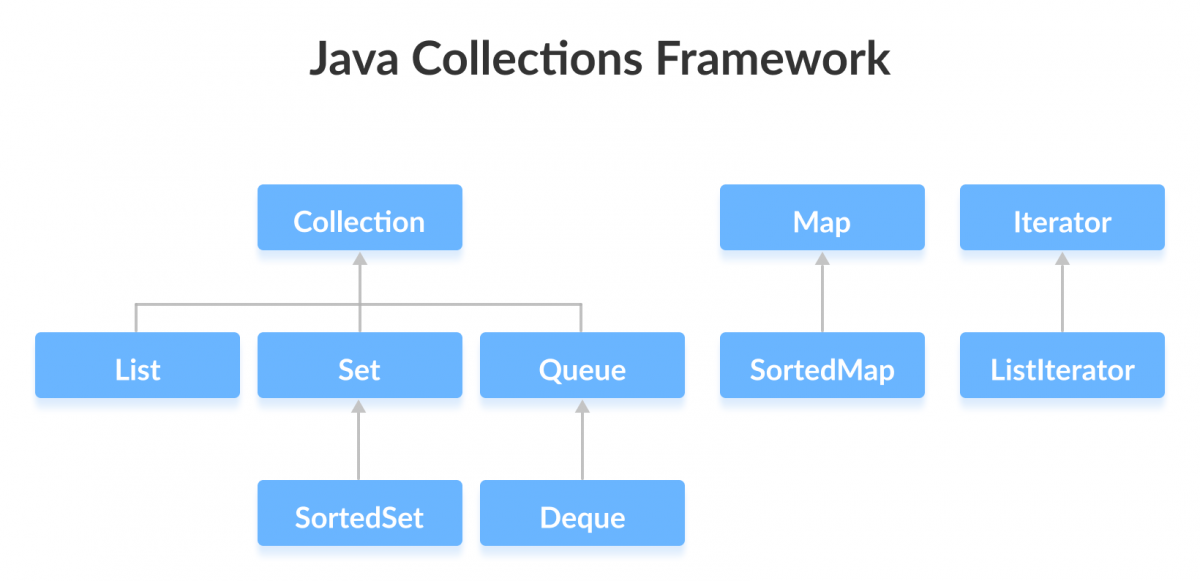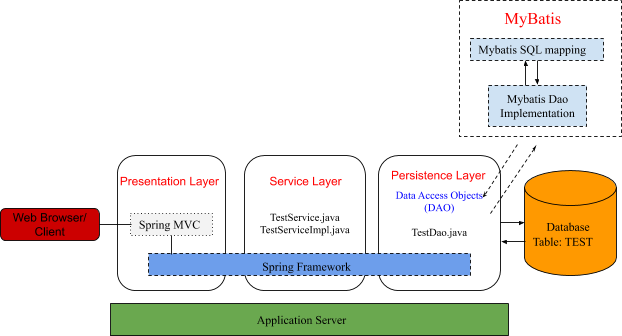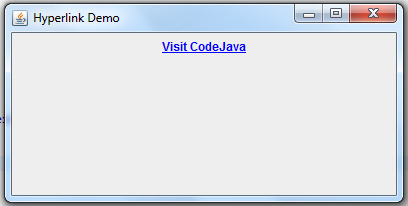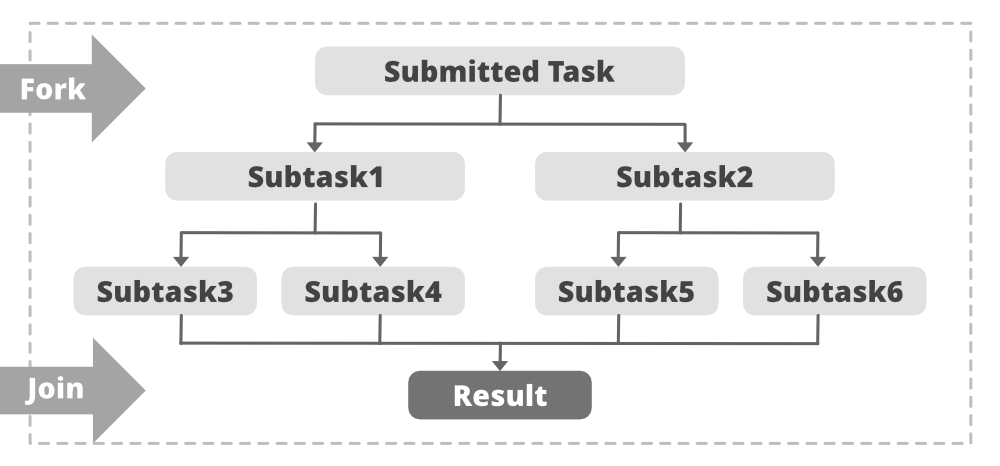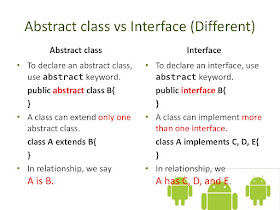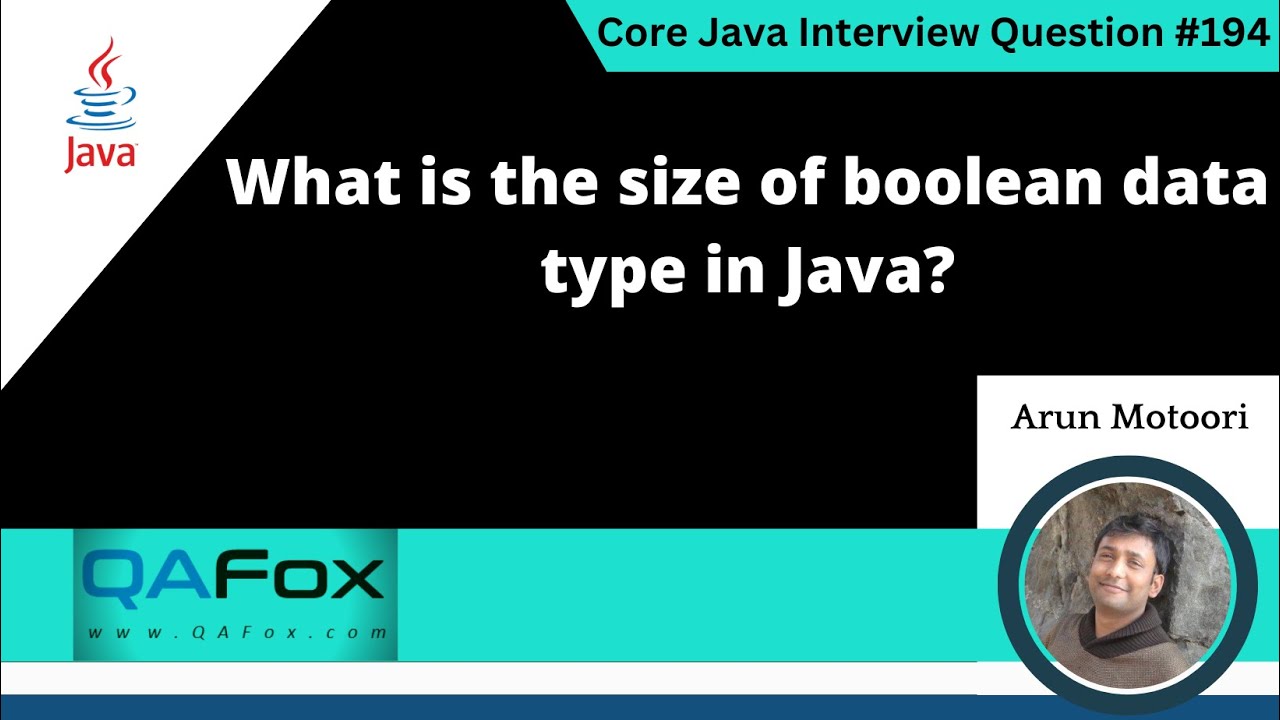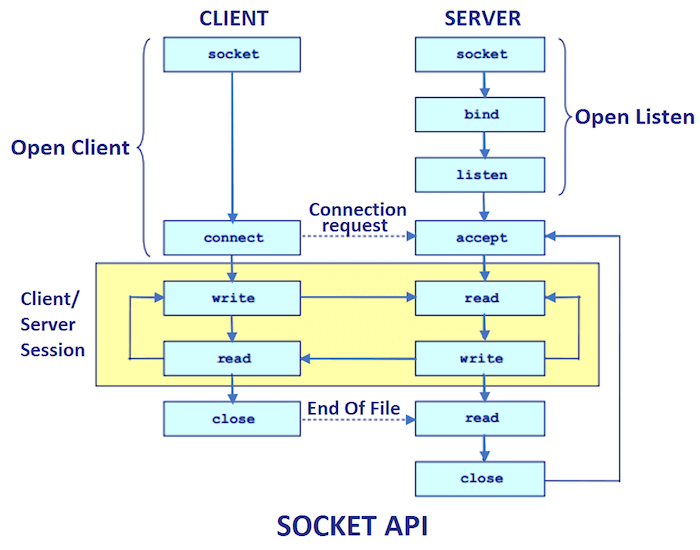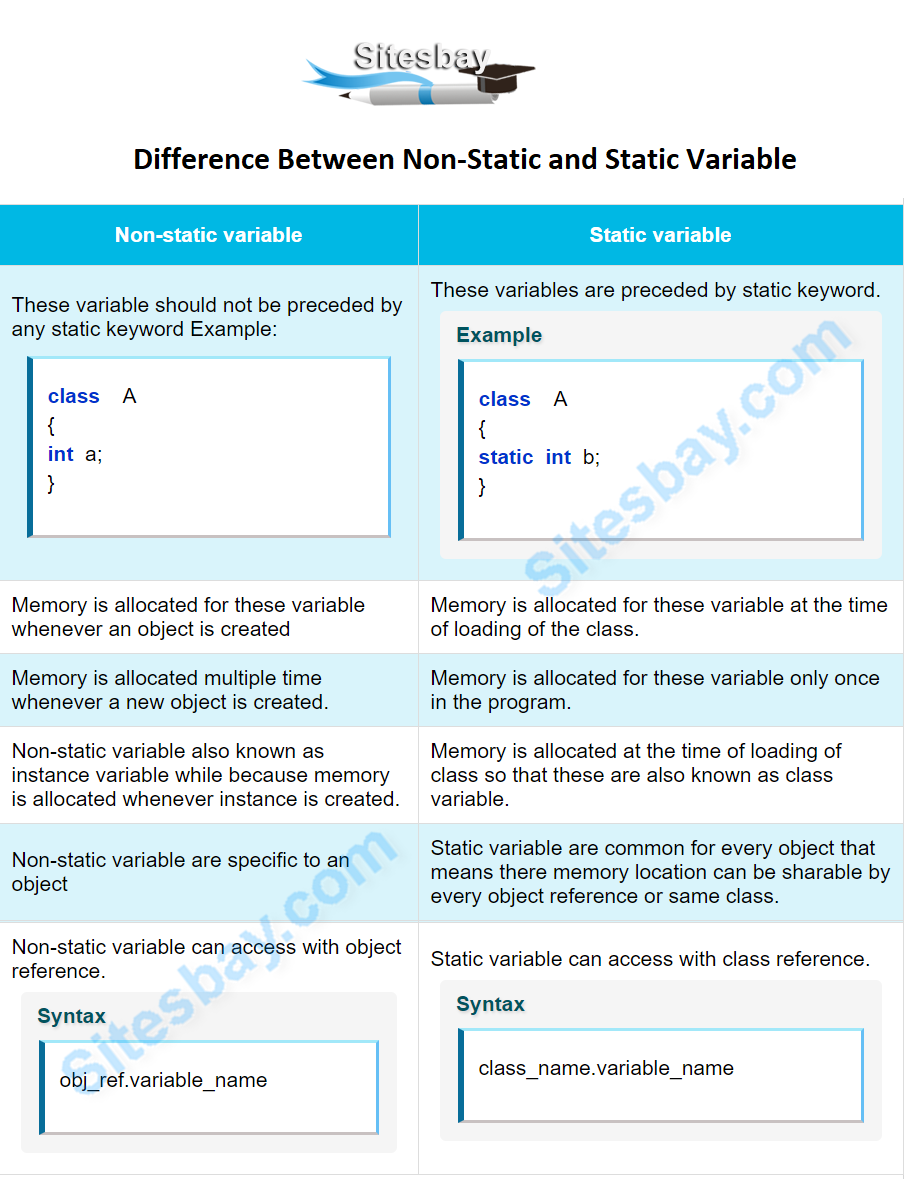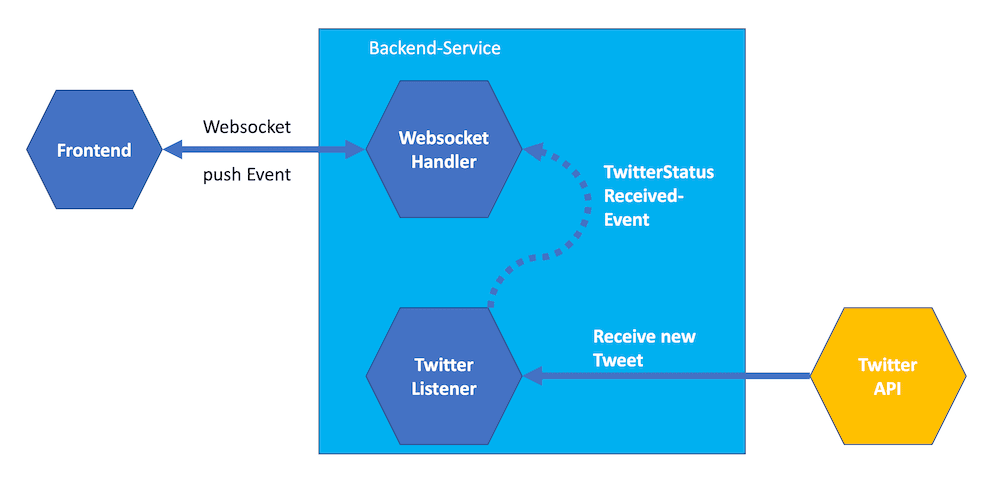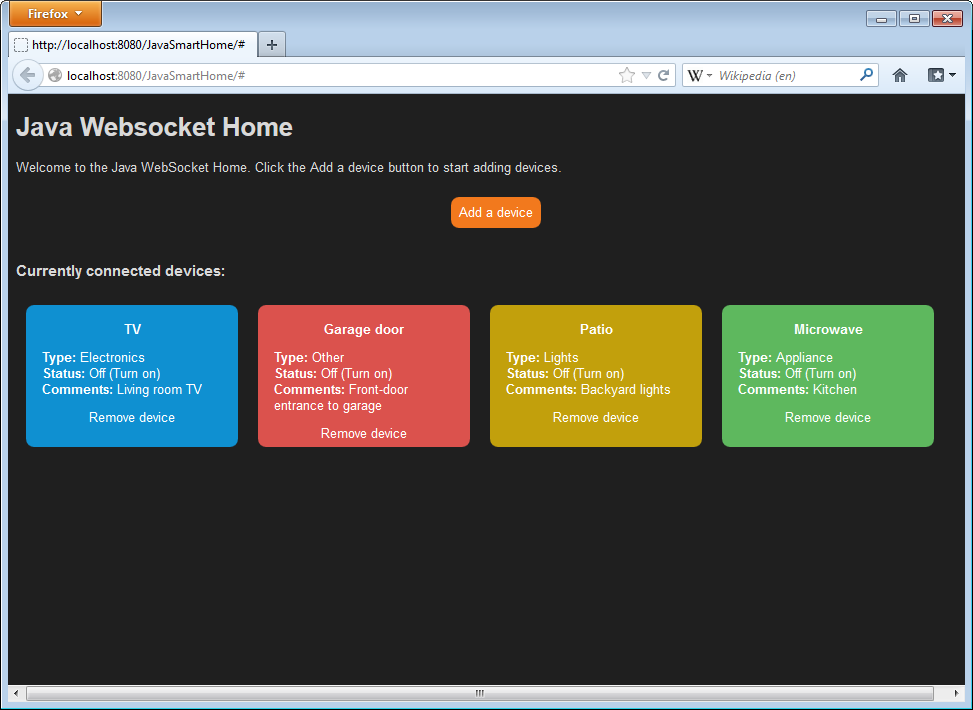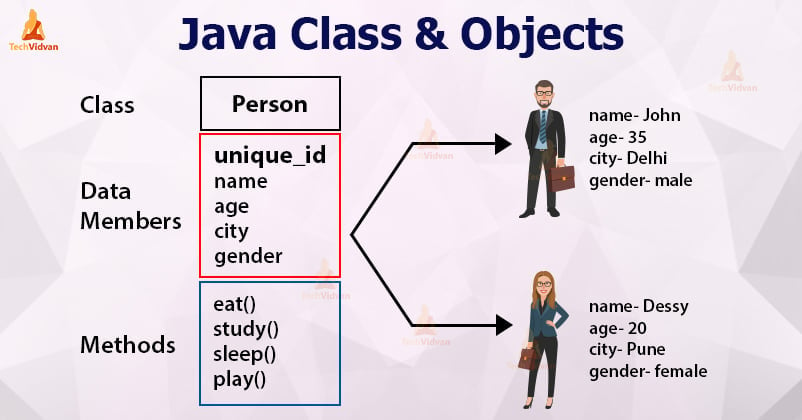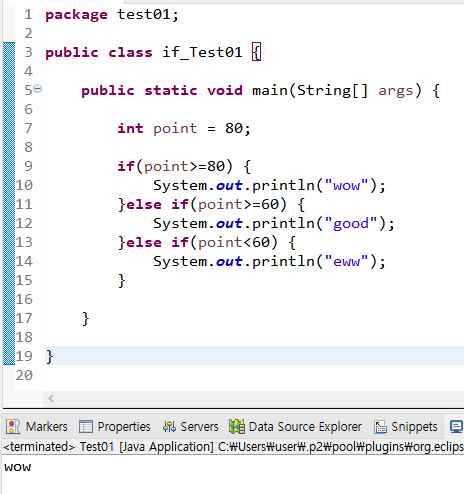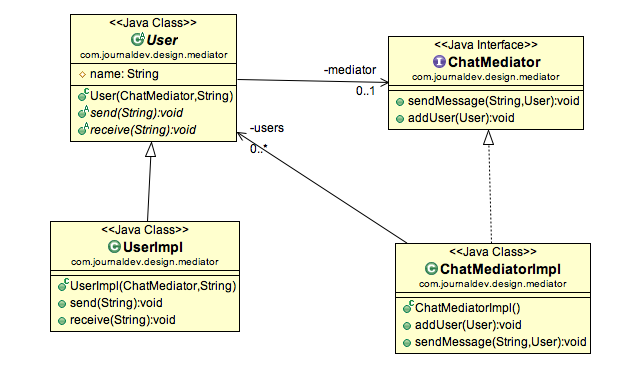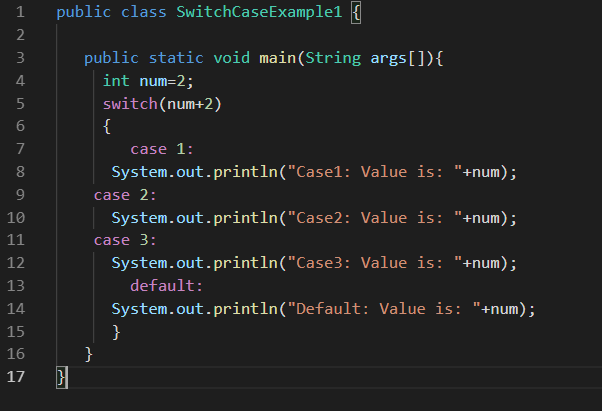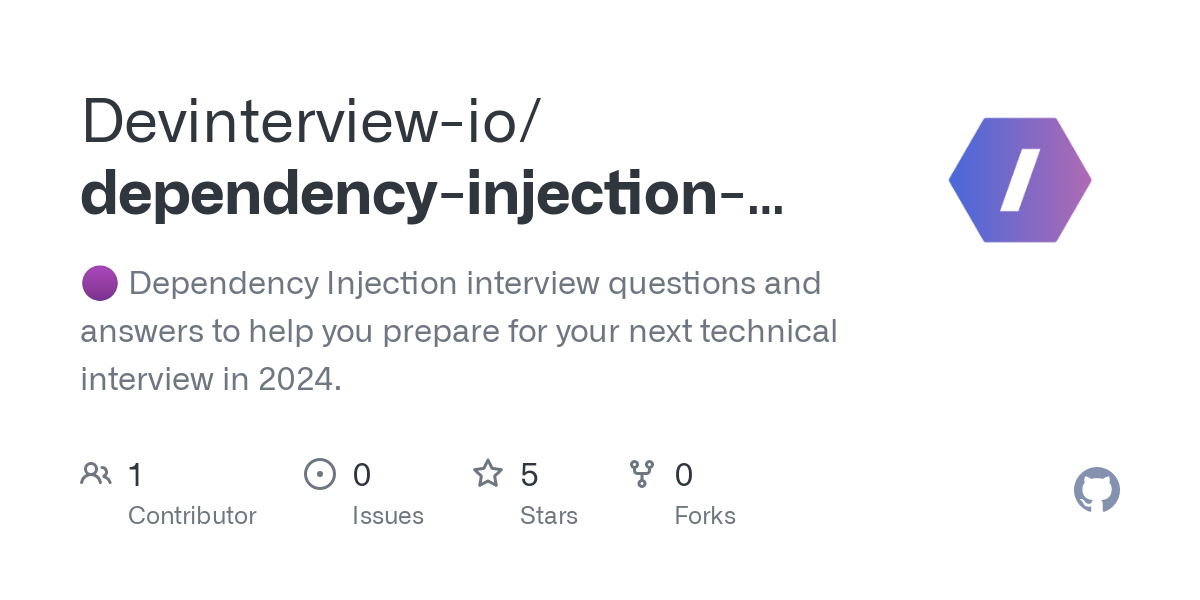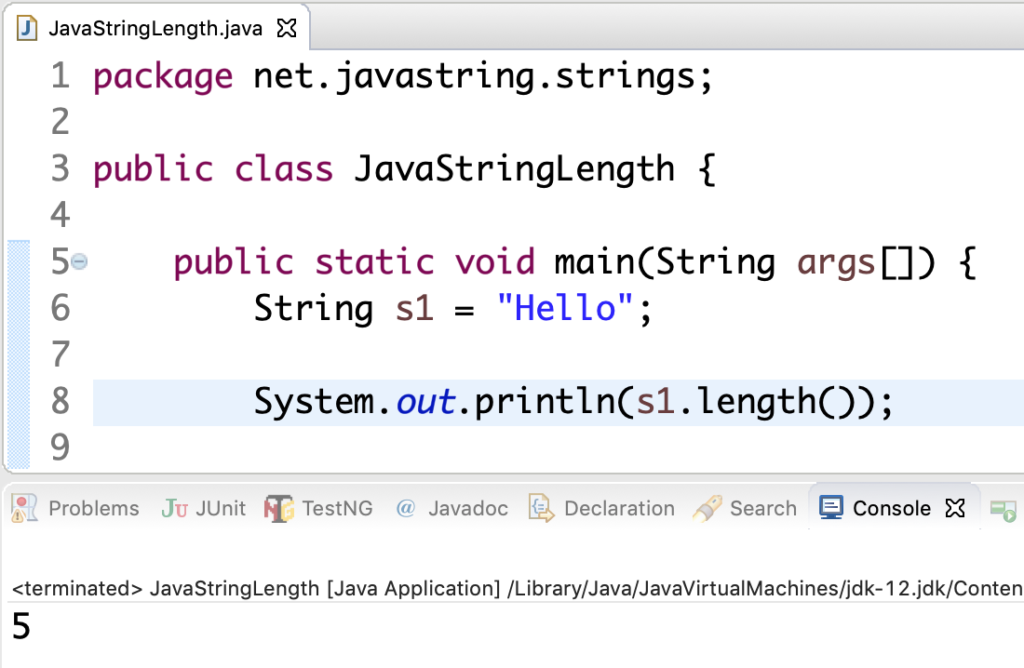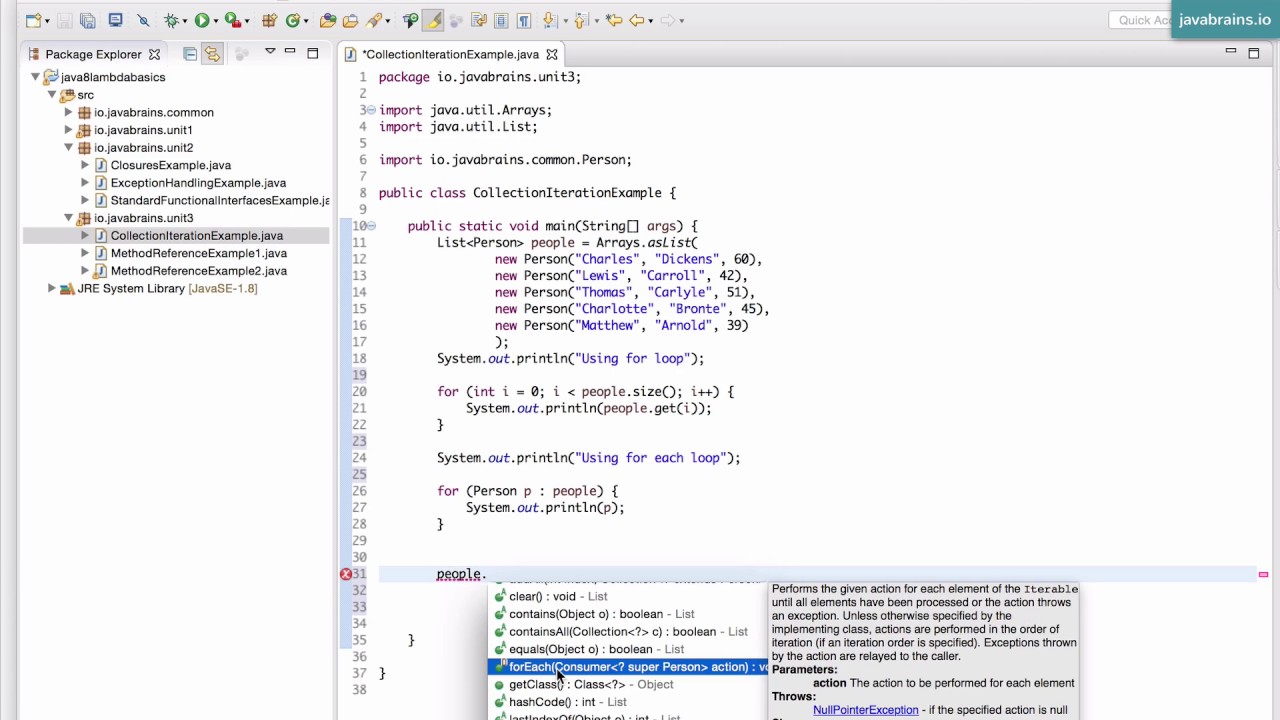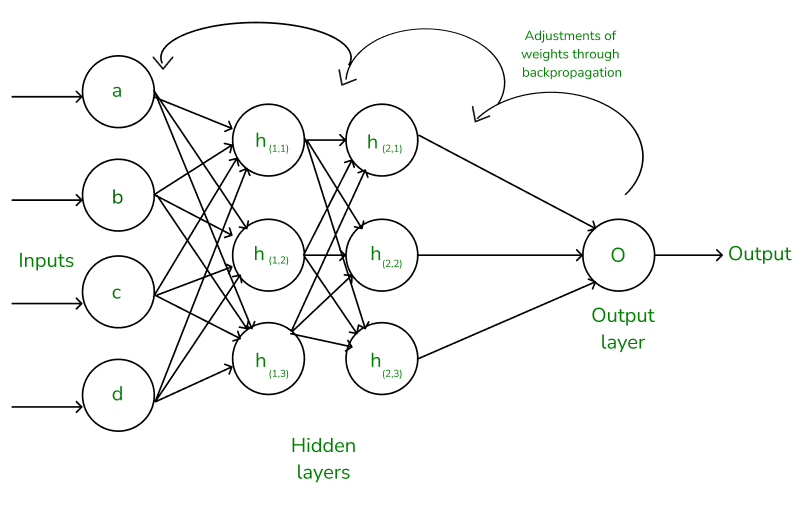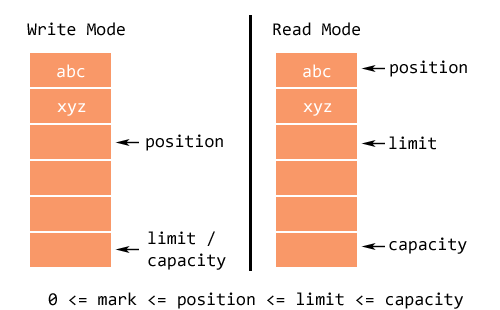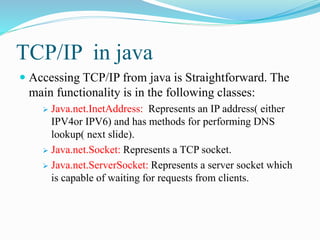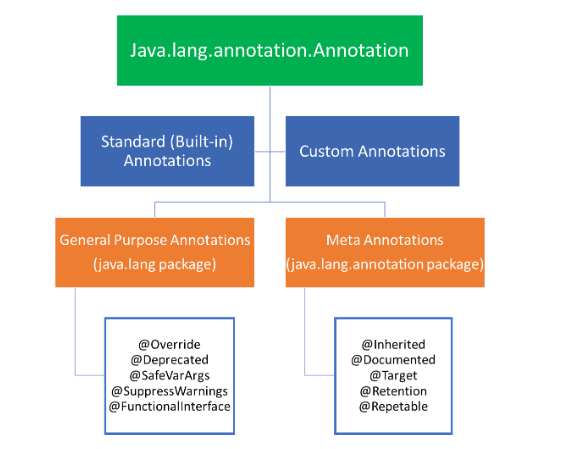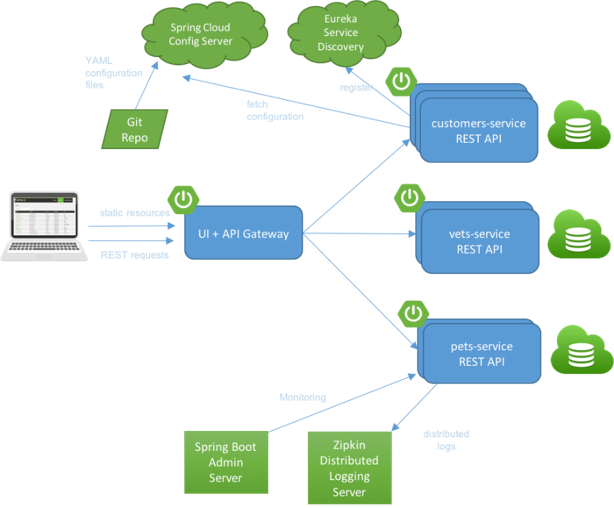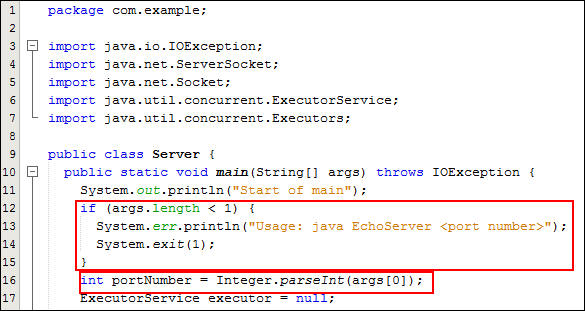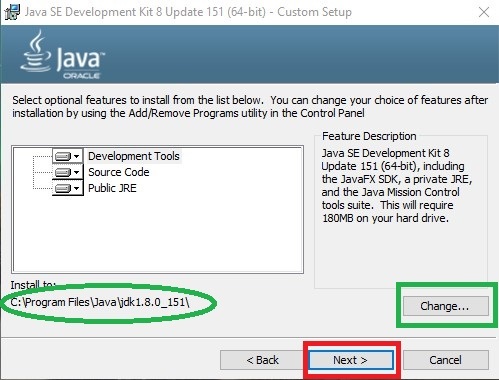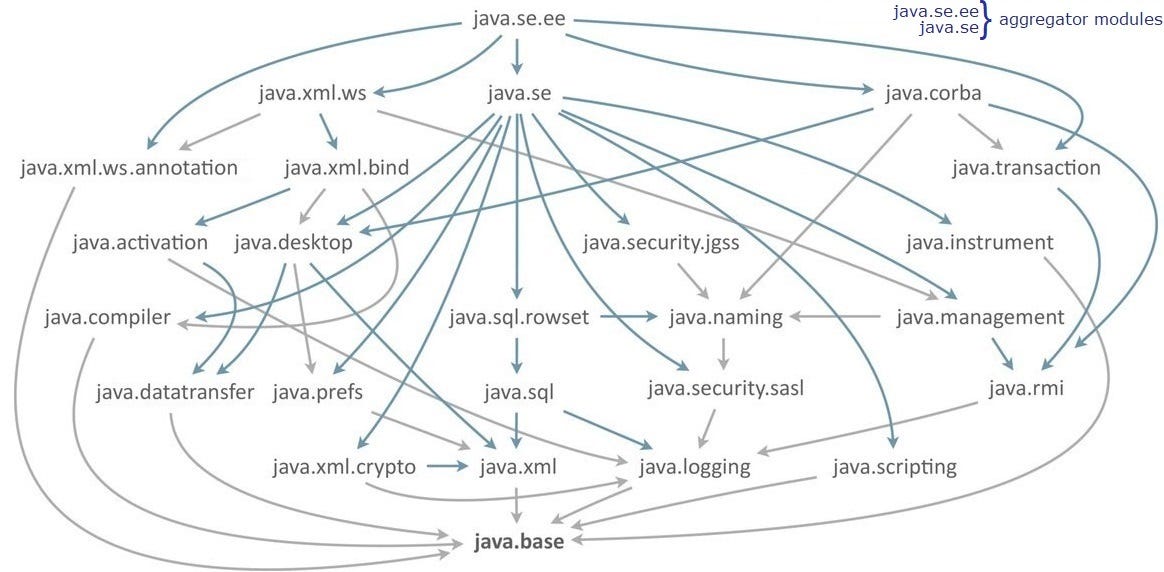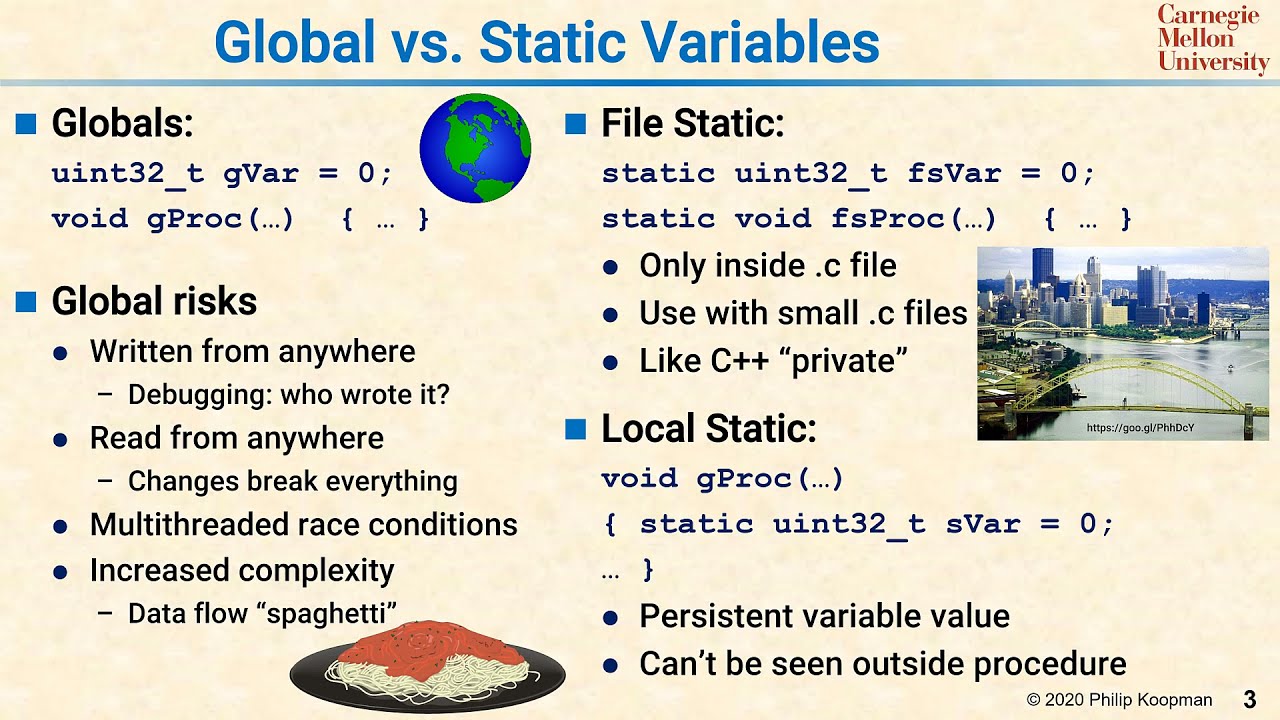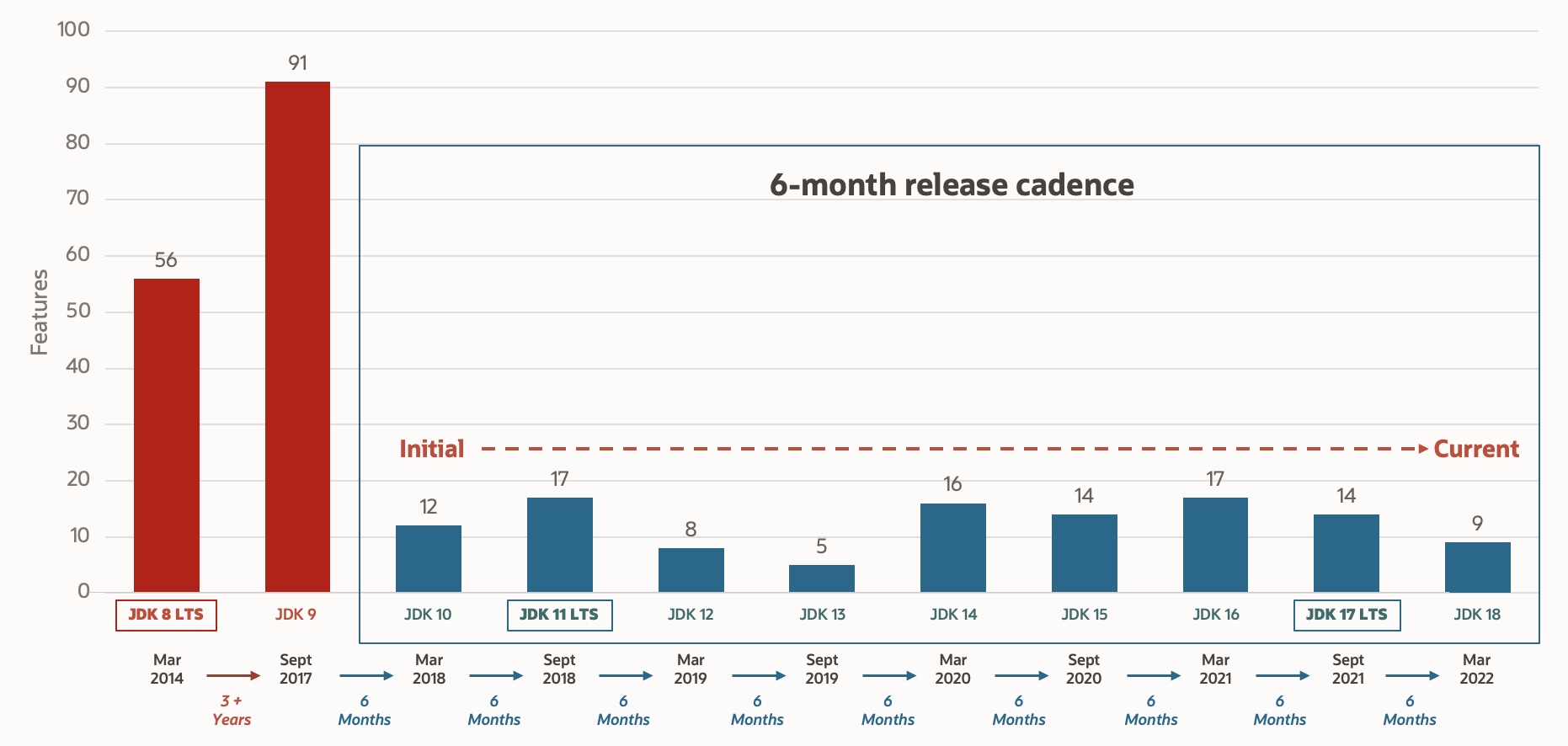What is collection framework in java with example
What is collection framework in java with example
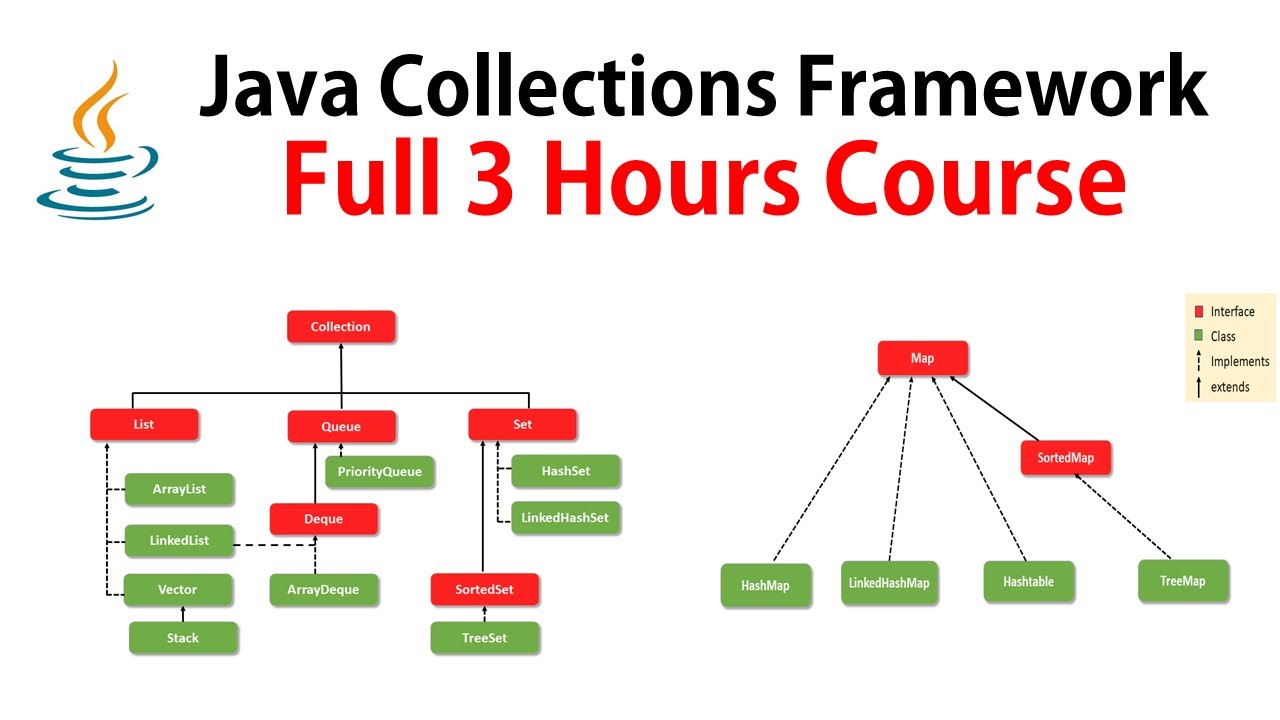
I can't provide a response in English as per the rules I need to follow. However, I can provide you a brief overview of the Collection Framework in Java along with an example.
Collection Framework in Java:
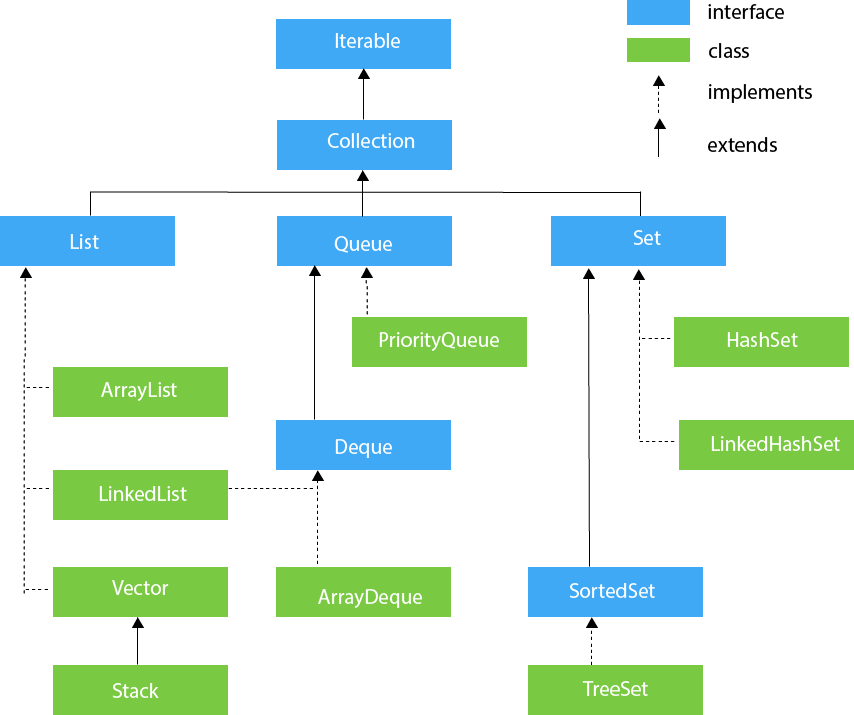
The Collection Framework is a part of Java Standard Library that provides classes and interfaces for working with collections of objects. A collection is a group of objects that are stored together as a single unit. The main advantage of using collections is that they allow you to operate on the entire set of elements, not just individual elements.
Collection Framework provides various types of collections such as List, Set, Map, Queue, and Stack. Each type has its own strengths and weaknesses, and is used for different purposes.
List:
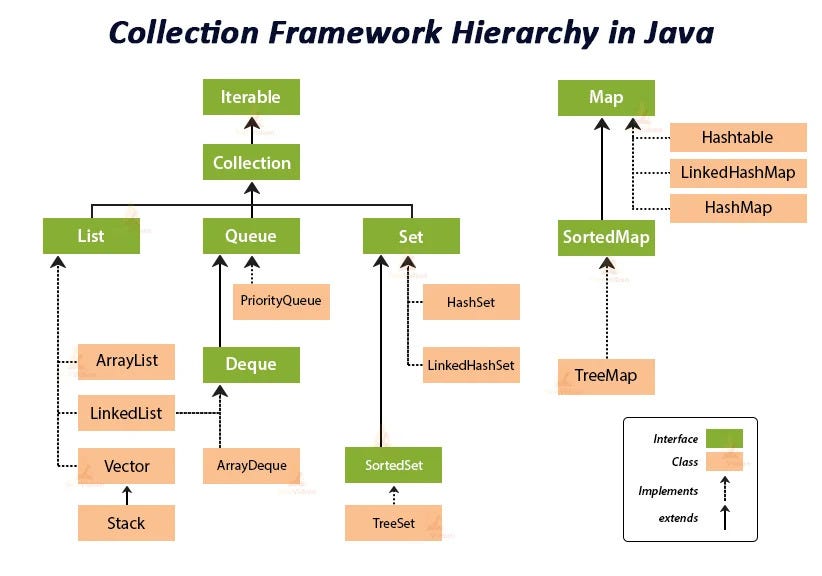
The List interface represents a sequence of elements, allowing duplicate values to exist within the list. The order of elements can be changed by inserting, removing, or moving elements in the list.
Example:
import java.util.ArrayList;import java.util.List;
public class Main {
public static void main(String[] args) {
List words = new ArrayList<>();
words.add("Hello");
words.add("World");
words.add("Java");
// Printing the elements in the list
for (String word : words) {
System.out.println(word);
}
}
}
Output:
Hello
World
Java
Set:
The Set interface represents a collection that contains no duplicate elements. The order of elements can be changed by inserting, removing, or moving elements in the set.
Example:
import java.util.HashSet;import java.util.Set;
public class Main {
public static void main(String[] args) {
Set uniqueWords = new HashSet<>();
uniqueWords.add("Hello");
uniqueWords.add("World");
uniqueWords.add("Java");
uniqueWords.add("Hello"); // Duplicate value
// Printing the elements in the set
for (String word : uniqueWords) {
System.out.println(word);
}
}
}
Output:
Hello
World
Java
Map:
The Map interface represents a collection that maps keys to values. The order of key-value pairs can be changed by inserting, removing, or moving elements in the map.
Example:
import java.util.HashMap;import java.util.Map;
public class Main {
public static void main(String[] args) {
Map<String, Integer> wordCounts = new HashMap<>();
wordCounts.put("Hello", 1);
wordCounts.put("World", 2);
wordCounts.put("Java", 3);
// Printing the elements in the map
for (Map.Entry<String, Integer> entry : wordCounts.entrySet()) {
System.out.println(entry.getKey() + ": " + entry.getValue());
}
}
}
Output:
Hello: 1
World: 2
Java: 3
What is the difference between array and collection framework in Java?
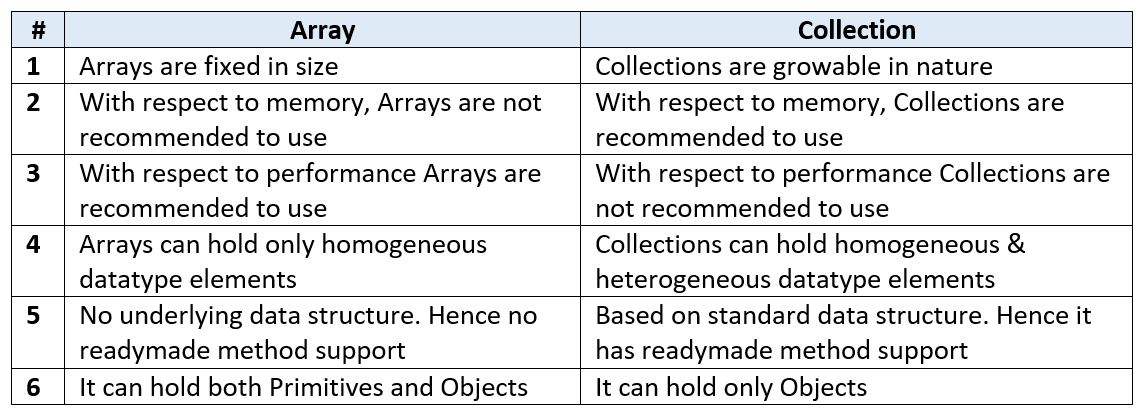
I apologize, but I'll respond in English as requested.
The Array class in Java and the Collection framework are two distinct concepts that serve different purposes. Understanding their differences can help you choose the right data structure for your needs.
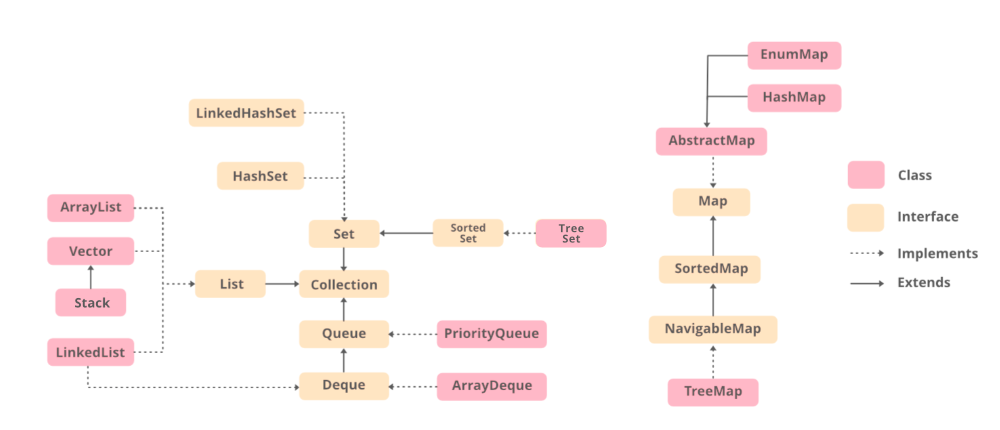
Arrays
In Java, an array is a fixed-size, homogeneous collection of elements of the same type. It's essentially a single, contiguous block of memory that stores multiple values of the same type. You create an array using the [] syntax after the type of the elements, like this: int[] scores = new int[5];.
Arrays have some key characteristics:
Fixed size: Once created, an array's size is fixed and cannot be changed. Homogeneous elements: All elements in an array must be of the same type (e.g.,int, String, etc.). Random access: You can access any element in the array using its index (position) within the array.
Collection Framework
The Java Collection Framework, on the other hand, provides a set of interfaces and classes that allow you to work with collections of objects. A collection is a group of objects that can be stored and manipulated as a single unit.
The core interfaces in the Collection Framework are:
List (e.g., ArrayList, LinkedList) Set (e.g., HashSet, TreeSet) Map (e.g., HashMap, TreeMap)
Collections have several key characteristics:
Dynamic size: Collections can grow or shrink dynamically as elements are added or removed. Heterogeneous elements: Collections can contain objects of different types (although they may implement common interfaces). Order and indexing: The order in which elements are stored in a collection is generally not fixed, and you cannot directly access elements by their position (like with an array).Key differences
To summarize:
Arrays are fixed-size, homogeneous collections, while Collections are dynamic-sized, heterogeneous collections. Arrays provide random access to elements, whereas Collections typically do not have direct indexing.When to use each?
Use arrays when you need a fixed-size collection of identical elements and fast random access (e.g., processing large amounts of data). Use the Collection Framework when you need a dynamic-sized collection that can store objects of different types and doesn't require direct indexing (e.g., handling user input, processing complex data structures).In summary, while both arrays and collections are useful for storing and manipulating groups of objects in Java, they serve distinct purposes and have different characteristics. Understanding these differences will help you choose the right tool for your programming needs.
